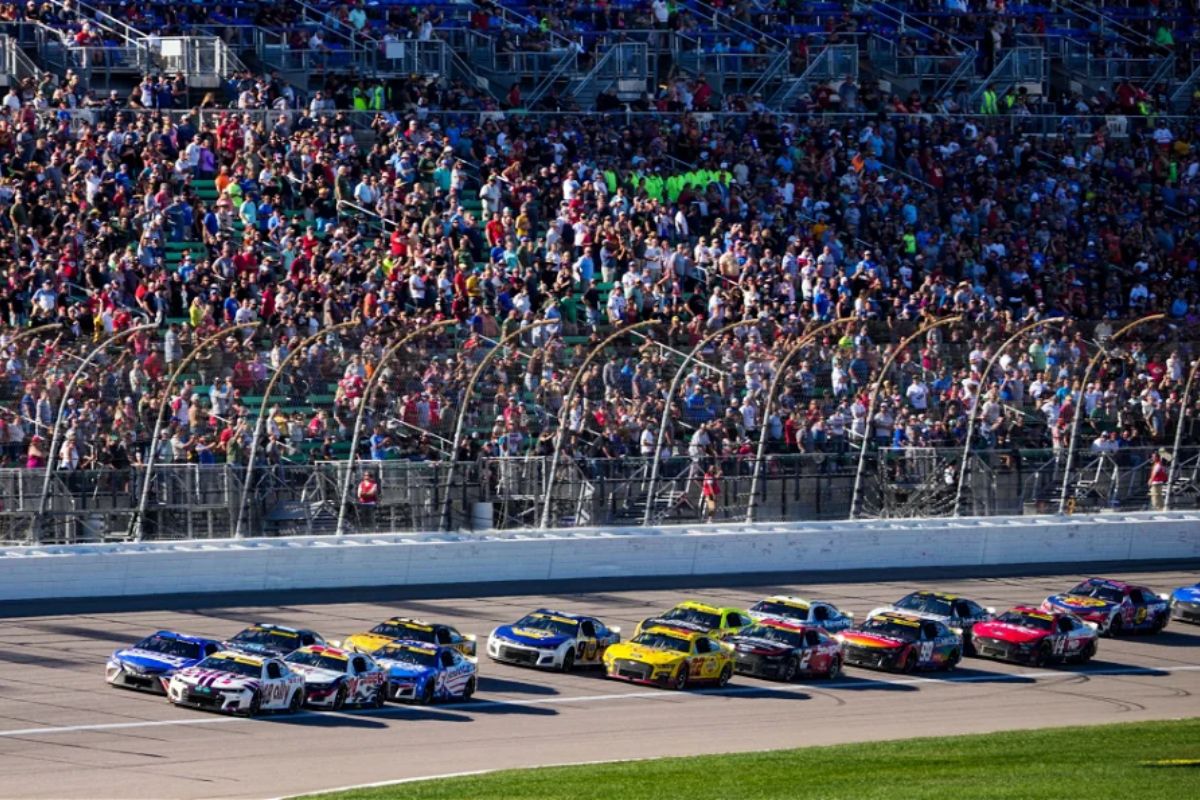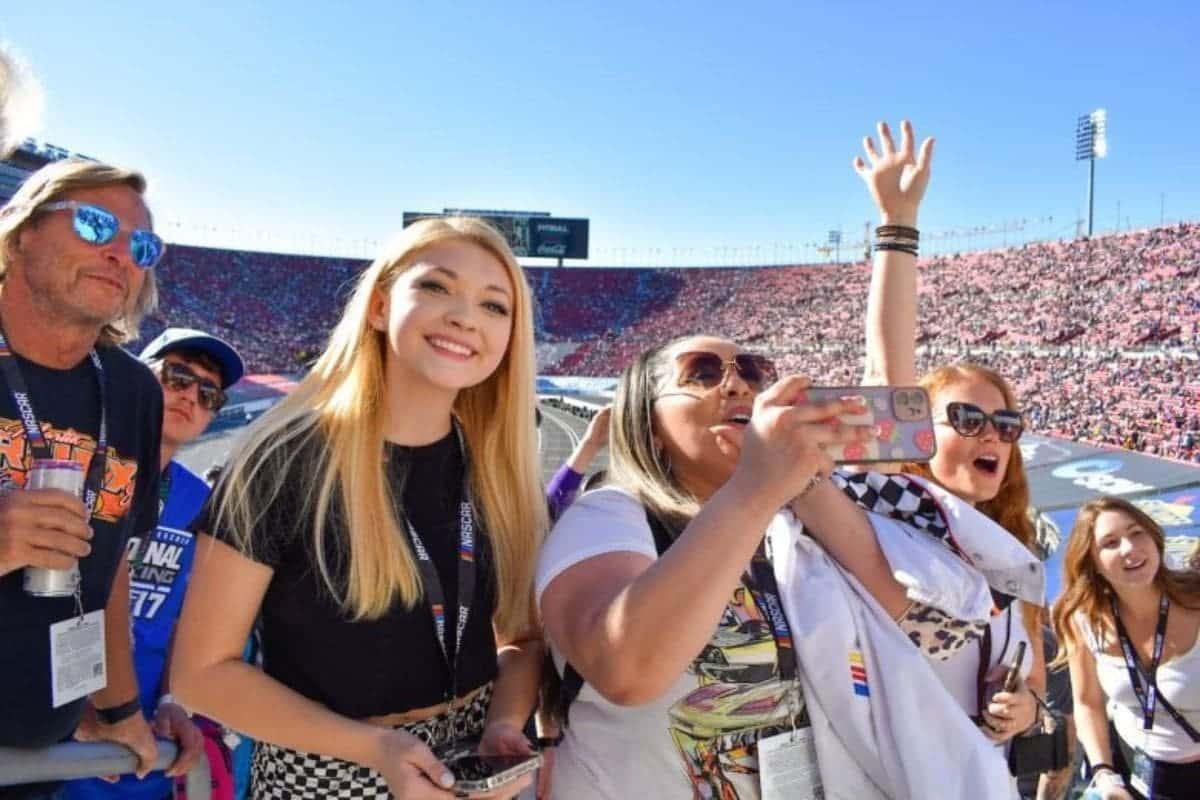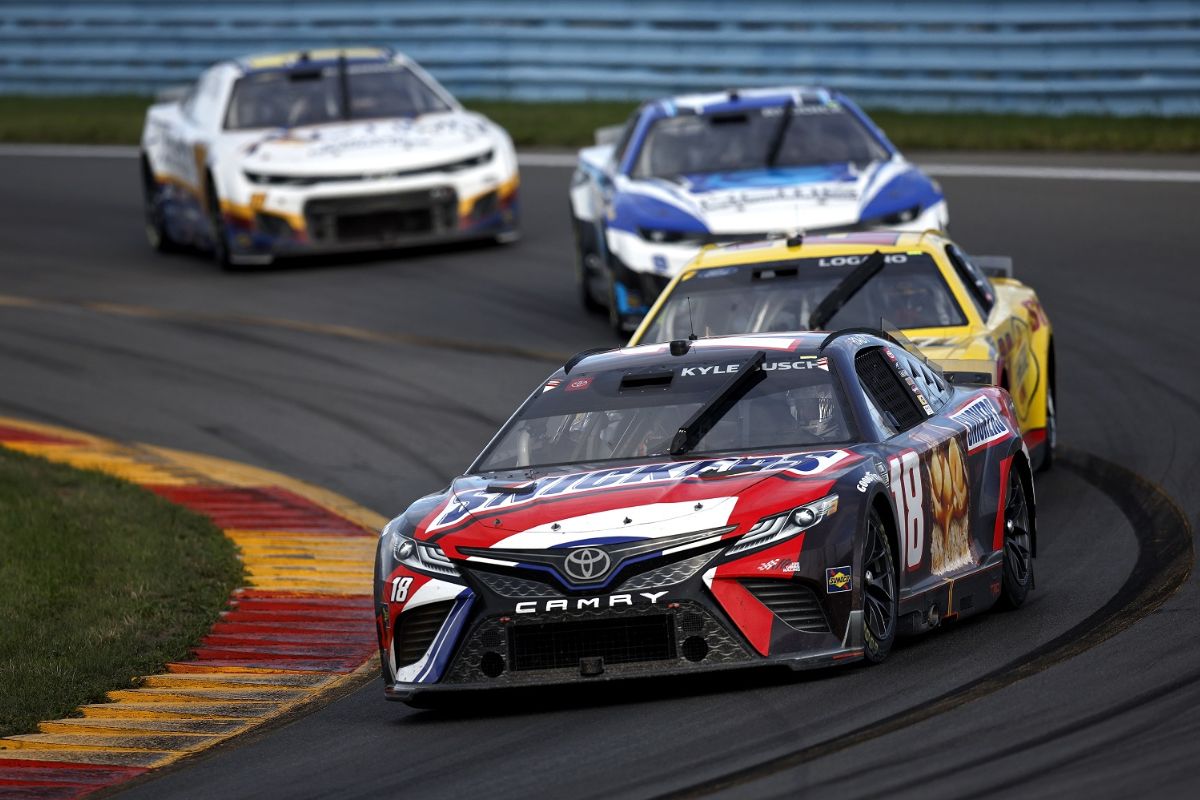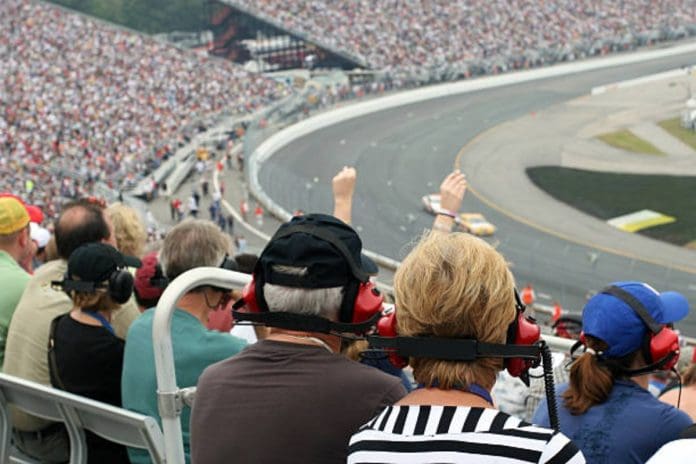NASCAR Fans Offer Clever Fix: In the wake of recent race delays at Kansas Speedway, NASCAR fans have put forth an intriguing proposal: shifting to night races. This suggestion not only aims to bypass weather-related interruptions but also promises to amplify the event’s appeal by showcasing races under the illumination of stadium lights. The concept of night races is not new to NASCAR, yet its implementation at Kansas Speedway could offer distinct advantages, such as cooler track temperatures that potentially improve vehicle performance and reduce tire degradation.
Key Takeaways
- NASCAR fans suggest utilizing Kansas Speedway’s existing lighting for a night race to manage the rain delay.
- Fans argue that racing under lights could enhance visibility and safety, improving the overall event.
- Night racing could attract larger audiences by accommodating viewers who are unavailable during daytime hours.
- Cooler evening temperatures at night are predicted to enable faster speeds and reduce tire wear.
- The proposal aligns with fans’ preferences for the spectacle and excitement of night races, historically proven at venues like Bristol Motor Speedway.
Rain Delay and Contingency Plans
The organization employs a multifaceted contingency planning strategy that is essential for minimizing disruptions and maintaining the integrity of the racing schedule. Initially, NASCAR closely collaborates with meteorological services to obtain accurate and timely weather forecasts. This proactive approach allows them to anticipate adverse weather conditions and prepare accordingly.
The use of advanced weather tracking technology is vital. Radar systems and predictive weather modeling provide NASCAR officials with the tools needed to make informed decisions about delays, postponements, or adjustments in the race schedule. In instances where rain is anticipated, NASCAR can adjust the event timeline preemptively, reducing the impact on the race and the spectators.
NASCAR has developed sophisticated rain delay protocols, which include detailed communication plans to inform teams, sponsors, and fans about the status of the event. This transparency is crucial in managing expectations and maintaining a positive fan experience despite weather setbacks.
The organization also utilizes highly efficient track drying technology, such as the Air Titan systems, which reduce the time needed to resume racing after a rainfall. These machines can dry a track much faster than traditional methods, ensuring that races can be continued as soon as possible.

Fans’ Unique Idea: Racing Under the Lights
While NASCAR has implemented thorough contingency plans for rain delays, fans have proposed a creative solution: holding races under the lights at mile-and-a-half tracks. This suggestion not only addresses the immediate issue of weather-related disruptions but also introduces an element of visual spectacle and excitement that could enrich the experience for both attendees and television viewers.
“Thank goodness they have lights Bob 😂”.
“I’m so down for a night race”. – fans reaction
- Extended Racing Windows: Lighting would allow races to continue beyond the typical daylight hours, thereby providing greater flexibility in scheduling around unpredictable weather conditions.
- Improved Viewer Experience: Races under the lights tend to be more visually dramatic, which could attract larger audiences and increase television ratings.
- Safety Improvements: Proper lighting can greatly enhance visibility for drivers, potentially reducing the risk of accidents during poor weather conditions.
Night Races in NASCAR
NASCAR’s recent reduction in night races has significant implications for the sport’s scheduling and viewer engagement. Historically, night races have been a staple of NASCAR, offering a unique spectacle under the lights that differentiates it from other motorsports events. However, the shift to host only seven of the 36 annual races during nighttime hours marks a strategic shift largely driven by television viewership metrics.
Analyzing the data, it becomes apparent that night races have not maintained strong TV ratings, a critical metric for the sport’s revenue streams and broader appeal. For example, the night race at Bristol, a highlight in the NASCAR calendar, attracted just 1.5 million viewers last year, signaling a potential decline in fan interest or mismatches in scheduling preferences. This downturn in viewership is a crucial factor in the governing body’s decision to limit the number of night races.
From a logistical standpoint, the reduction in night events also affects the operational dynamics of race teams and tracks. Night races require different preparations, such as lighting and safety measures, which can entail significant costs. Additionally, the atmospheric conditions at night, such as cooler temperatures, can affect race strategies and vehicle performance, adding another layer of complexity to the event planning.

Fans’ Reaction and Lobbying for Night Race
Amid concerns over weather delays, enthusiastic fans have begun to push vigorously for the introduction of more night races, highlighting their preference for the cooler, more visually enchanting nighttime environment. This demand gained momentum particularly after the rain-induced delay at the Kansas race, where fans suggested that shifting the event to a nighttime slot could not only circumvent weather issues but also improve the general spectacle of the race.
- Temperature Control: Racing at night mitigates the scorching daytime temperatures typical of many NASCAR tracks during the summer months, providing a more comfortable viewing experience for spectators and a cooler working environment for the teams and drivers.
- Enhanced Visibility and Safety: Under the illumination of stadium lights, visibility is improved, which can lead to safer racing conditions. The glare of the sun can be a hazard, reducing reaction times during critical moments.
- Broadcasting Benefits: Night races can attract viewers who are unavailable during the day, potentially increasing television ratings and expanding NASCAR’s audience.
These factors, combined with the success of night events at venues like Bristol Motor Speedway, have created a strong case for more such schedules in the NASCAR calendar. Fans argue that the unique combination of cooler temperatures and enhanced visibility not only improves the racing experience but also adds excitement and drama that daytime races can sometimes lack.
Fans’ Excitement and Predictions
Anticipating the potential for a night race, fans expressed their excitement and made hopeful predictions about the scheduling shift at Kansas Speedway. The unique capability of Kansas Speedway to host night races due to its lighting infrastructure sets it apart from many other tracks in the NASCAR circuit, which typically see daylight events due to the absence of such facilities. This particular feature not only improves the visual spectacle but also offers flexibility in race scheduling, which is vital in circumstances like the current delay.
I’d be cool with a night race. NASCAR honestly doesn’t have enough of them anymore basically none till the 600 then late summer
— Tony Hogan (@tony_hogan) May 5, 2024
The optimism among fans was palpable, with predictions circulating on social media and forums about the likelihood of the race proceeding into the evening hours. Cooler evening temperatures can lead to faster speeds and less wear on tires, potentially altering race dynamics favorably.
“They can race tonight, it looks like it will move out by 6:00”.- fan reaction
While the decision ultimately rests with NASCAR officials, the readiness of the Kansas Speedway to accommodate a night race presents an opportunity to not only manage the current delay more effectively but also to capitalize on the heightened excitement and engagement from fans. After the rain stops, fans hope the race can start once the track is dry. They’re waiting for the official word.

News in Brief: NASCAR Fans Offer Clever Fix
The proposal by NASCAR fans to introduce night races at Kansas Speedway represents a strategic response to recurring race delays due to adverse weather. By shifting to evening events, the potential improvements in driver visibility and track conditions could greatly enhance the overall quality and appeal of the race.
Additionally, cooler temperatures at night could lead to higher speeds and reduced tire degradation, potentially heightening the competitiveness and spectator experience of NASCAR events at this venue.
Our Reader’s Queries
Q: What are NASCAR fan rewards?
A: Earn Points while supporting your favorite driver by watching races, tackling challenges, and visiting the tracks. Collect badges along the way to boost your earnings. Then, dive into the Fan Rewards catalog to redeem your Points for an array of exciting rewards, including tickets, autographed merchandise, and beyond.
Q: What do NASCAR fans care about?
A: Modern-day NASCAR fans exemplify unparalleled loyalty and dedication to their beloved drivers and teams. From traveling extensive distances to attend races to proudly donning apparel adorned with their favorite drivers’ colors and logos, their fervent support creates an electric atmosphere that fuels the excitement of the sport.
Q: How loyal are NASCAR fans?
A: NASCAR fans are renowned for their steadfast brand loyalty, with a staggering 86 percent recognizing the indispensable role of sponsorship in sustaining race teams. Building on this awareness, an impressive 81 percent express gratitude for the contributions sponsors bring to the NASCAR experience, acknowledging their crucial support in fueling the sport they love.
Also Read: NASCAR Fans Examine Michael Mcdowell Deal With RC Giant


